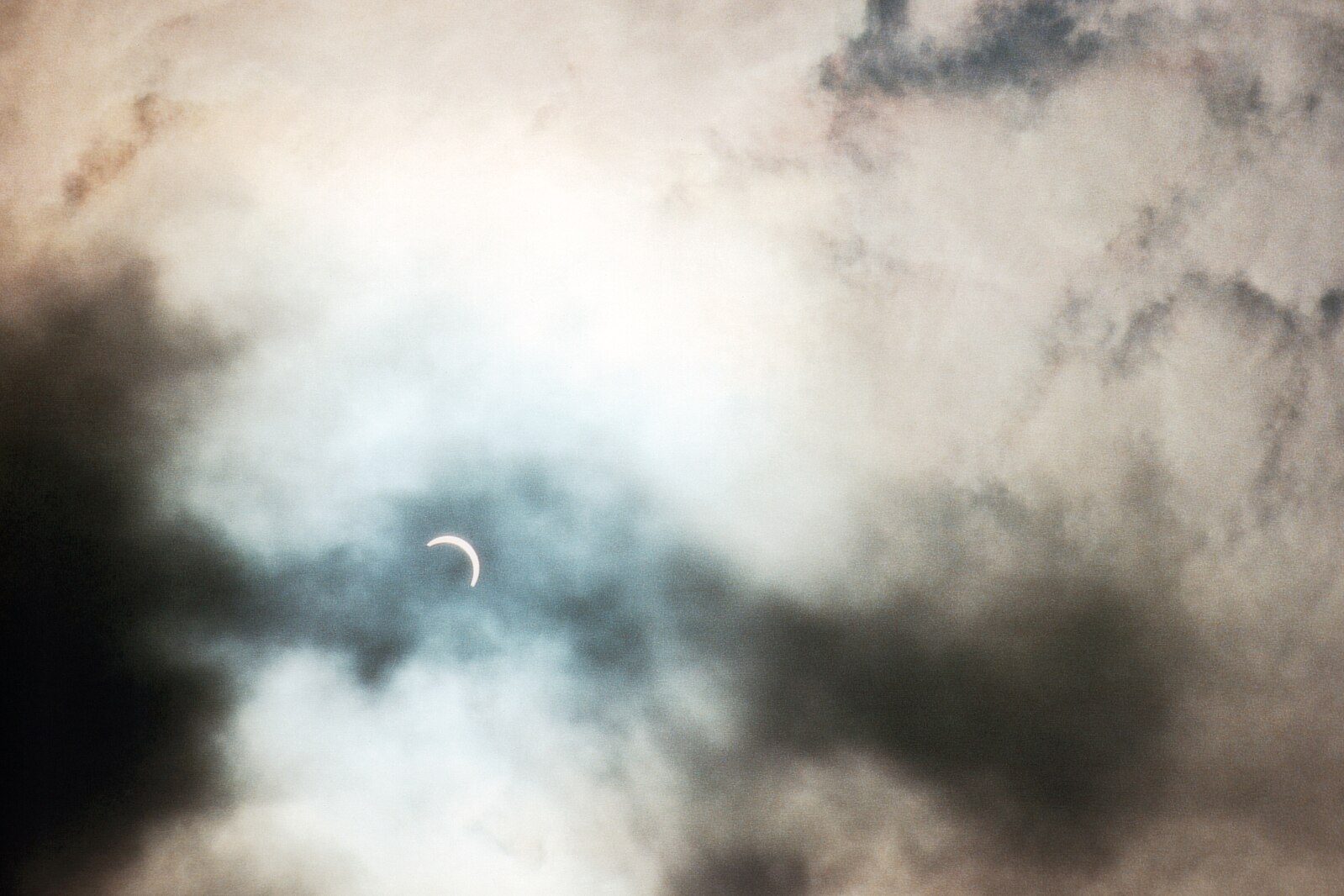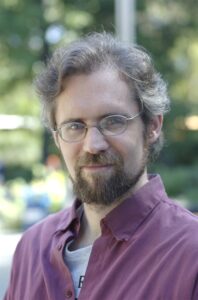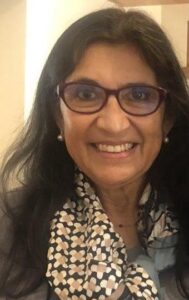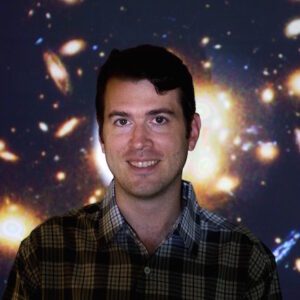
March 26, 2024
On Monday, April 8, a total solar eclipse will cross North America, passing over Mexico, the United States and Canada.
According to a NASA chart, the path of the eclipse will pass through New York state about 3:18 p.m. The darkness in New York City will reach close to 90%, and the next time a total eclipse crosses the U.S. won’t be till 2044.
Four astrophysicists on the Science faculty at Borough of Manhattan Community College (BMCC/CUNY)—Professors K.E. Saavik Ford, Barry L. McKernan, Quinn Minor and Shana Tribiano—share their insights into this phenomenon that will basically turn New York City into one big science project.
In addition to teaching at BMCC, Drs. Ford, McKernan and Minor are members of CUNY Astro, an Astronomy and Astrophysics Community. Along with Dr. Tribiano, they are research associates at the American Museum of Natural History. And most recently, Drs. Ford and McKernan became members of NASA’s latest Medium Explorer or Mid-EX mission, the Ultraviolet Explorer (UVEX) space telescope project—they are the only community college professors on the prestigious, 56-member international team.
Balancing out the astrophysical aspects of the eclipse discussion, anthropologist Patricia Mathews, Professor and Chair of the Ethnic and Race Studies Department, shares insight into the cultural response to natural phenomena, such as an eclipse.
For starters, what exactly is an eclipse?

“A solar eclipse happens when the Moon lies between a place on the Earth and the Sun, blocking the direct sunlight,” explains Dr. McKernan.
“Because the Earth and Moon are moving, and the Moon is far from Earth (one quarter of a million miles) this is a short-lived effect and only covers a little bit of the Earth’s surface,” he says.
“Generally, this effect happens around New Moon when the Moon is on the Sun-side of the Earth. We don’t see a solar eclipse every month which tells you that the Moon orbits Earth at an angle which is fixed, but rotates. So, every so often, the shadow of the Moon lines up and hits the Earth.”
In this case, he clarifies, “the eclipse path isn’t that unusual, it’s just where the Moon’s shadow happens to lie between two moving objects. Most of the time the path is over the ocean, so we’re a bit more lucky than usual.”
Why is it dangerous to look at the eclipse without proper glasses?

Most people know that looking directly into an eclipse without proper gear can permanently damage the eyes. What else do we need to know?
Dr. Ford appeared in a recent NBC Today segment at the 1:30 mark and stressed safety first, in any eclipse viewing.
“Don’t buy just any eclipse glasses,” she said. “There are counterfeits out there.”
Dr. Ford advises people to look for the ISO (international safety standard) marking to ensure a pair of solar eclipse glasses is the “real thing.”
“UV (ultraviolet) light, the same light that can burn your skin without you really noticing until afterwards, can also burn your retinas,” she says. “This is why Rule Number One is: ‘Don’t look at the Sun directly without protection!’”
Stay tuned for more Dr. Ford has to say on the subject, as she appears on NBC Live, Monday, April 8 on the Great North American Eclipse show.
“To see a black Sun in the sky is a rare and alien experience.”

Some claim that viewing a total eclipse is a life-changing event.
“If anything makes us human, it’s the need to explain the natural by evoking the supernatural,” says Dr. Patricia Mathews. “This separates us from other living beings on the Earth.”
According to the Heritage Education Network in Belize, in the Yucatec Mayan language, the eclipse is called “Chi’bal K’iin” which translates to “When the Sun Is Eaten.”
The Mayan view was that during an eclipse, the Moon bites the Sun. Another ancient Mayan view is that giant, mythical ants attacked the Sun during an eclipse. Drum rituals were held to scare off these threats. Today, in some Central American countries, children bang on cans and people fire their shotguns into the air during an eclipse.
An article in Live Science reports that Yugoslavians once linked solar eclipses to a type of werewolf called the ‘vukodlak,’ while western Siberia’s Tatars told of a vampire that tried to swallow the sun and failed after burning his tongue.
And today’s viewers?
“I saw the total eclipse in 2017,” says Dr. McKernan. “It was amazing! To see a black Sun in the sky is a rare and alien experience. I’d recommend it if you haven’t seen it! To pick out planets in the sky during the daytime was amazing. The collective ‘oohs’ were wonderful!”
Where is the best place to watch the eclipse? And how dark will it actually get?
Dr. McKernan advises anyone who wants to watch the eclipse on April 8, “Find clear skies if you can. If you’re in the City, go outside with your eclipse glasses or stand near a tree and look for the crescents of light under trees as the leaves act as pinhole projectors.”

Dr. Tribiano wants people at BMCC to know that one viewing option is an eclipse viewing event at the Green-Wood Cemetery in Sunset Park, Brooklyn. “It’s free—but you have to make a reservation to ensure a spot—and they’ll be giving out a limited amount of free solar viewing glasses,” she says, and adds that the City College of New York (CCNY) Physics Club is having an eclipse viewing party at the CCNY Planetarium on Monday, April 8 at 3 p.m.
Another resource she shares is the I Love New York website, which provides viewing information around New York state, and a Harvard University website that tracks the eclipse across its full path.
As for expectations, Dr. Quinn clarifies for first-time viewers that while 90% sounds like an impressive percentage of totality when it comes to an eclipse, “It won’t be super noticeable, unfortunately. It will reach 90% here, but even 90% isn’t very dark.”
In other words, there won’t be sudden pitch darkness in the middle of the afternoon. Still, the gradual dimming can seem surreal, and there are accounts of birds going silent during an eclipse.
“It will still be cool to see using eclipse glasses, or using a pinhole viewer to project the Sun’s image,” says Dr. Quinn, who visited his daughter’s preschool to show them how to make cereal box projectors to safely watch the Sun’s image during the eclipse.

“I will be taking my kids upstate to watch the eclipse, weather permitting,” he adds, and has some advice for parents that could apply to anyone viewing the phenomenon.
“If your kids are using eclipse glasses, they should be supervised to keep their eyes safe, especially the little ones; they should put the glasses on before looking at the Sun, and only take them off after looking away from the Sun.”
Even a saltine cracker can be used as a viewer. And don’t use binoculars!
Dr. Quinn adds as a side note, “The eclipse glasses will NOT protect your eyes if you are trying to look at the Sun through binoculars! The binoculars act like a magnifying glass and will burn a hole right through the glasses, so this is quite dangerous.”
A good alternative, he says, is to use a small pinhole to project the Sun’s image onto a sheet of paper.
“There are many options for doing this—even a colander or saltine cracker will work! It’s a fun project for the kids to make a pinhole projector out of a cereal box,” he says.
Finally, he says, “The last tip I would add, is that if you are traveling with your kids to an area where the eclipse will become total, bring lots of entertainment for the kids. It takes at least an hour before the eclipse becomes total, but those few minutes of totality are 100% worth it.”
STORY HIGHLIGHTS
-
Four astrophysicists at BMCC—Science Professors K.E. Saavik Ford, Barry L. McKernan, Quinn Minor and Shana Tribiano—and an anthropologist, Professor and Chair of the Ethnic and Race Studies department Patricia Mathews, share insights into the total eclipse coming April 8
-
UV light during the eclipse can damage the eyes, and Dr. Ford advises people to look for the ISO (international safety standard) marking to ensure a pair of solar eclipse glasses are truly safe
-
The darkness in New York City will reach about 90%, and the next time a total eclipse crosses the U.S. won’t be till 2024

